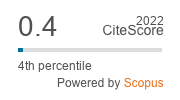Aspects of host preference and succession in thrips infesting ruellia tuberosa
DOI:
https://doi.org/10.33307/entomon.v1i1.1122Abstract
Polyphagous and restricted oligophagous species when they inhabit a host plant with a restricted flowering season, tend to show ecological succession and interspecific competition. The periodicity of occurrence and abundance of six species of thrips inhabiting the flowers of Ruellia as evaluated from their population dynamics for a period of two years, indicated that, while the polyphagous species were always primary or secondary colonizers, the restricted oligophagous species were always tertiary inhabitants. The frequency distribution or the number of thrips per flower per day for two years is discussed along with the nature of the host range of the primary and secondary species.
Downloads
Published
How to Cite
Issue
Section
License
Copyright (c) 2024 Association for Advancement of Entomology

This work is licensed under a Creative Commons Attribution-ShareAlike 4.0 International License.


